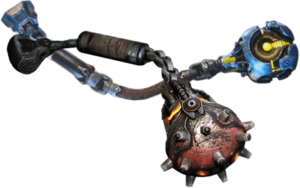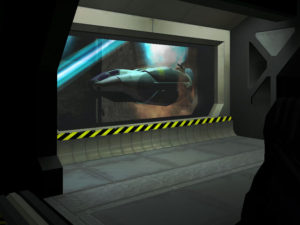
While actual combat is typically nasty, brutish and short, reel combat rarely assumes the form of the ‘one cut, one kill’ method privileged by the Samurai, except when the hero is required to dispatch ranks of nameless pawns. Cinematic swordfights are usually much longer, but brevity is sometimes used to emphasize the tremendous agility or strength of a particular character. The legendary fighter Achilles is introduced as exactly this type of dominant battlefield presence in Wolfgang Petersen’s Troy (2005), when he defeats his much larger opponent, in a fair fight, with a single aggressive attack. Generally speaking, films depict either similarly practiced competitors or an overmatched protagonist struggling to survive against a much more capable foe, both of which are scenarios that lend themselves to the procession of long, drawn out battles.
In Troy, Brad Pitt’s Achilles and Eric Bana’s Hector are portrayed as well matched combatants, both said to be the most capable warriors of their homelands, but the choreography reveals a great sense of difference in the way each embodies aspects of martial culture. In many respects, the way in which a character fights may be as important as the way in which he speaks. A distinct attack can go so far as any line of dialogue when it comes to creating a sense of who they are and how they fit into the narrative world. As these moves coalesce to form a fighting style that is not merely cohesive or contemporary to the diegesis, but which illustrate vice and virtue or other personal attributes, choreography can contribute as much to the development of a character as any other aspect of a production.
While their actions are almost always swift and their objectives usually simple, carefully crafted choreography may feature all of the complexity of well written dialogue. As the Sean Bean’s Odysseus contends, both the sword and the spoken word are tools upon which a man may rely to achieve his objectives. “You have your sword, I have my tricks,” he explains. “We play with the toys the gods give us.” Furthermore, neither are merely a means to an end, but crafts of which mastery reflects a great deal else about an individual who practices them. In Troy, Achilles exhibits tremendous skill in combat, described in the script simply as ‘godlike,’ which is illustrative not only of his supernatural ability, but of his confidence, pride, and desire to be remembered as the greatest warrior the world has ever seen. >> CONTINUE >>
![]() Given the series’ notoriously high levels of testosterone, Gears of War 4 is surprisingly focused on matriarchy. Its female characters have always been on equal footing with their male counterparts, but in this installment they are more central to the narrative. Humanity is rebuilding, relying on maternity during a time of renewal and rebirth.
Given the series’ notoriously high levels of testosterone, Gears of War 4 is surprisingly focused on matriarchy. Its female characters have always been on equal footing with their male counterparts, but in this installment they are more central to the narrative. Humanity is rebuilding, relying on maternity during a time of renewal and rebirth.![]()


